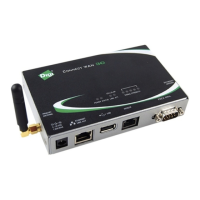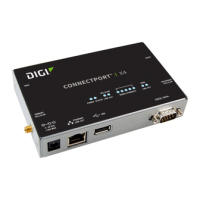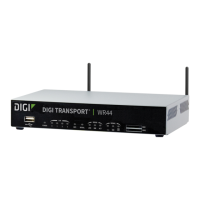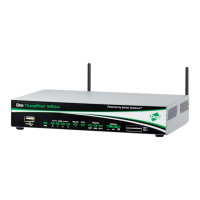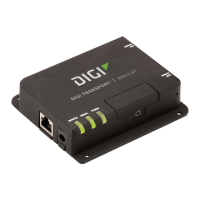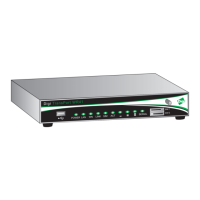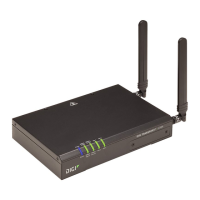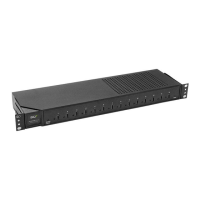Interfaces Wide Area Networks (WANs)
Digi Connect IT® 4 User Guide
137
d. For Weight, type the relative weight for default routes associated with this interface. For
multiple active interfaces with the same metric, Weight is used to load balance traffic to
the interfaces.
e. Set the Management priority. This determines which interface will have priority for
central management activity. The interface with the highest number will be used.
f. Set the MTU.
g. For Use DNS:
n Always: DNS will always be used for this WWAN; when multiple interfaces have the
same DNS server, the interface with the lowest metric will be used for DNS
requests.
n When primary default route: Only use the DNS servers provided for this WWAN
when the WWAN is the primary route.
n Never: Never use DNS servers for this WWAN.
The default setting is When primary default route.
1. See Configure SureLink active recovery to detect WAN/WWAN failures for information about
configuring SureLink.
17. Click Apply to save the configuration and apply the change.
Command line
1. Select the device in Remote Manager and click Actions > Open Console, or log into the
Connect IT 4 local command line as a user with full Admin access rights.
Depending on your device configuration, you may be presented with an Access selection
menu. Type admin to access the Admin CLI.
2. At the command line, type config to enter configuration mode:
> config
(config)>
3. Create a new WWAN or edit an existing one:
n To create a new WWAN named my_wwan:
(config)> add network interface my_wwan
(config network interface my_wwan)>
n To edit an existing WWAN named my_wwan, change to the my_wwan node in the
configuration schema:
(config)> network interface my_wwan
(config network interface my_wwan)>
4. Set the appropriate firewall zone:
(config network interface my_wwan)> zone zone
(config network interface my_wwan)>
See Firewall configuration for further information.
